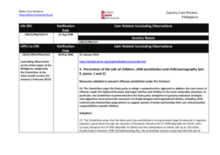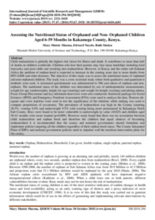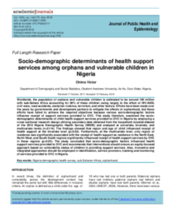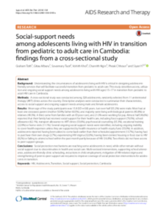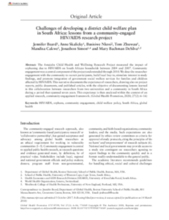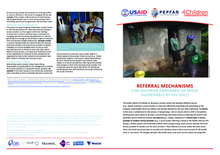Displaying 41 - 50 of 412
This country care review includes the care related Concluding Observations adopted by the Committee on the Rights of the Child and the Committee on the Rights of Persons with Disabilities.
The objective of this study was to assess the nutritional status of orphaned and non-orphaned children in Kenya.
This narrative documents the experience of researchers with the objective of documenting lessons learned in the Amajuba Child Health and Wellbeing Research Project, a collaboration between researchers from two universities and a community in South Africa which measured the impact of orphaning due to HIV/AIDS on South African households between 2004 and 2007.
The authors of this paper sought to explore the psychometric properties and validity of the Achenbach Youth Self-Report and Child Posttraumatic Stress Disorder Symptom Scale among orphans and vulnerable children (OVC) living in Lusaka, Zambia.
This study examines the mental health of adolescents living with HIV (ALHIV) in Namibia, and the factors that contribute to mental health problems.
The researchers in this study conducted formative research on mental health issues and HIV/STI risk behavior in Kasarani, a large slum in Nairobi, to guide the development of future interventions.
This study examined the sociodemographic determinants of child health support services provided to orphans and vulnerable children in Nigeria by employing a cross sectional research design utilizing secondary data obtained from the household recoded dataset of the 2013 Nigeria Demographic Health Survey (NDHS).
This study describes access, utilization and ongoing social support needs among adolescents living with HIV aged 15–17 in transition from pediatric to adult HIV care in Cambodia.
The Amajuba Child Health and Wellbeing Research Project measured the impact of orphaning due to HIV/AIDS on South African households between 2004 and 2007. Community engagement was a central component of the project and extended through 2010. This article describes researcher engagement with the community to recruit participants, build local buy-in, stimulate interest in study findings, and promote integration of government social welfare services for families and children affected by HIV/AIDS.
This brief of referral mechanisms within the context of OVC programs describes the different types of referral mechanisms and describes key components of setting up a functioning referral system.

